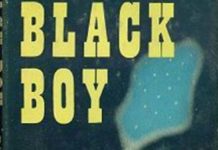Dan Brown’s novel “The Lost Symbol” sends Robert Langdon on a quest to uncover the secrets of the Masons. The society of Freemasons has long been shrouded in secrecy.
The Freemason Society is the world’s largest international secret society. It has long been riddled with rumors and myths about its origins and symbols. Dan Brown’s bestselling novel The Lost Symbol has brought the Masons into the spotlight much as he did with the Catholic Church’s Opus Dei in The Da Vinci Code. Symbols such as a wine-filled skull, secret pyramid and Masonic temples in Washington D.C. fill Brown’s novel. Are these really Masonic symbols or do they come from the imagination of a very creative author? The National Geographic recently wrote an article addressing Freemason symbolism and interviewed a current member of the Masons to find out the truth of what goes on in the secret brotherhood.
Origins of Freemasonry
Freemasonry is a fraternal brotherhood with origins in the late 16th to early 17th centuries in Scotland and England. There are an estimated 3 million members around the world, according to The Masonic Society. Candidates are required to declare a belief in a Supreme Being but are not asked to explain or identify their interpretation of a Supreme Being. The fraternity is organized into Grand Lodges and there are three degrees of Freemasonry, with the Master Mason being the highest. The first Grand Lodge was founded in England in 1717. Freemasonry expanded to the American colonies by the 1730s and some of the first members included George Washington, Ben Franklin, John Hancock and Paul Revere.
Freemasonry and the Pyramid
The pyramid, central to the plot of The Lost Symbol, is not a Masonic symbol. Likewise, the inverted pyramid with the “all-seeing eye,” part of the Great Seal of the United States and pictured on the U.S. dollar bill, was designed by artist Pierre Du Simitiere, who was not a Mason.
In fact, Benjamin Franklin, a well-known Mason, submitted an eyeless design to the committee to design the seal and was rejected.
Dan Brown and the George Washington Masonic Memorial
There is a George Washington Masonic Memorial located on Shuter’s Hill in Alexandria, Virginia as depicted in Brown’s novel. The Masonic Society states that the columns on the memorial’s exterior, as mentioned in the book, are used by the Masons to symbolize Wisdom, Strength and Beauty. A bronze statute depicting George Washington as a Freemason stands inside the memorial. The memorial also houses a library of more than 20,000 volumes of Masonic history and symbolism.
Freemasonry and Washington, D.C.
Brown often refers to the House of Temple in Washington, D.C. as Masonic headquarters. Indeed, The Masonic Society states that the House of Temple, designed by Jefferson Memorial architect John Russell Pope, is one of two national headquarters for the country’s Scottish Rite Masons. A Master Mason may join the Scottish Rite for continuing education about the fraternity, but, contrary to rumors, will not ever possess a higher degree than that of third degree—the Master Mason. The House of Temple is not shrouded in secrecy and, in fact, regularly hosts children’s concerts, public tours and the Burl Ives’ Collection–singer, actor and narrator of Rudolph The Red-Nosed Reindeer, according to National Geographic.
Freemasons Control the World
Conspiracy theorists often believe that Freemasons secretly rule the world through positions of prominence and power. However, in reality, each state has its own Grand Lodge which operates largely independently and oversees local lodges. Rarely do the states’ Grand Lodges coordinate with each other.
This myth most likely gained traction because of the number of powerful people who have been Freemasons. The Masonic Society declares that fourteen U.S. Presidents have been Masons; Gerald Ford was the last President who was a Mason.
Sources:
- “The Lost Symbol” and the Freemasons: 8 Myths Decoded
- The Masonic Society: The Lost Symbol & Freemasonry







